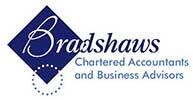Group capital allowances under review
If your company is part of a group, or is connected to other companies, you may receive a letter asking you to check if you have overclaimed capital allowances. Why might this have happened and should you be worried?

The annual investment allowance ( AIA) gives 100% tax relief on qualifying expenditure up to a specific limit (currently £1m), most commonly for plant and machinery. Group companies and those under common control all have to share a single AIA, to prevent abuse of the relief. Additionally, if there is a short or long accounting period, the AIA is apportioned accordingly. These considerations may be overlooked, meaning excess claims can occur, e.g. where two group companies both claim £1m.
If you receive a letter, it does not automatically mean that you have overclaimed. Such large scale campaigns are based on mass data mining, which is far from perfect but gives HMRC a reasonable base with which to identify potential errors. You should firstly check that the correct amount of AIA has been claimed for the accounting period(s) specified in the letter. If you discover a mistake, it should be corrected within 30 days of the date of the letter. However, if the AIA has been claimed correctly, it is still necessary to confirm this to HMRC using the contact details provided in the letter, otherwise an enquiry may be opened.
Related Topics
-
Sneaky change is a blow for side hustles
With most of the media focused on the headline-grabbing announcements from the Budget, a read of the published small print reveals another change coming in 2029. It’s bad news if you are an employee with a side hustle, but what’s going on?
-
HMRC checks directors’ loans are paid up
HMRC is writing to agents to check corporation tax returns for previous years are correct as it used to be possible to add a future date for an anticipated loan repayment. What’s the issue and what should you do if your advisor receives a letter?
-
Government quietly confirms change to key tax deduction
The headlines for individuals at last week's Budget were all about the income tax hikes. But the small print contained confirmation of another important change. What’s the full story?

 This website uses both its own and third-party cookies to analyze our services and navigation on our website in order to improve its contents (analytical purposes: measure visits and sources of web traffic). The legal basis is the consent of the user, except in the case of basic cookies, which are essential to navigate this website.
This website uses both its own and third-party cookies to analyze our services and navigation on our website in order to improve its contents (analytical purposes: measure visits and sources of web traffic). The legal basis is the consent of the user, except in the case of basic cookies, which are essential to navigate this website.